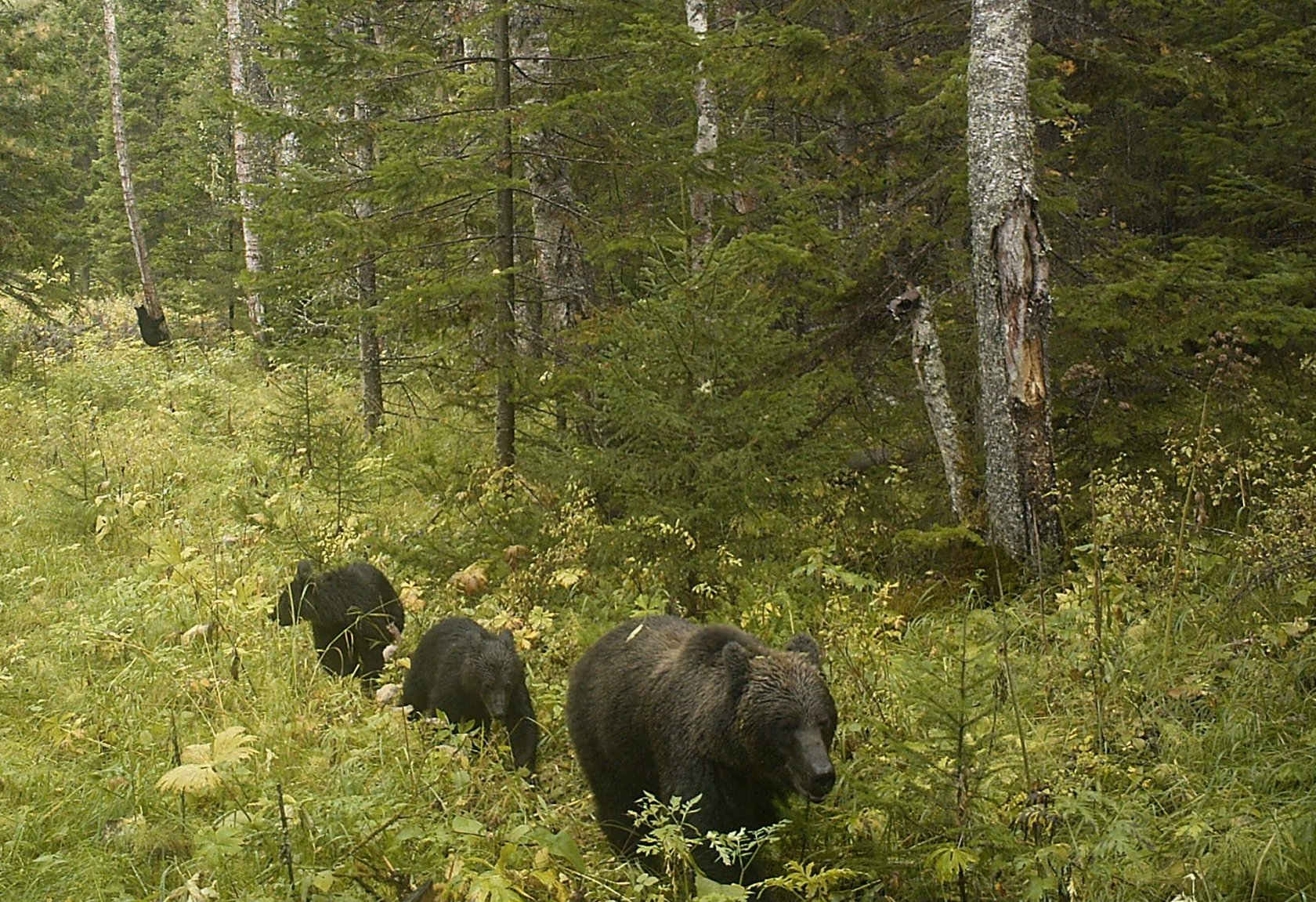AT HOME
A JOINT PROJECT
RUSSIA BEYOND THE HEADLINES AND SIBERIA:JOINING THE DOTS
PART I PART II PART III PART IV PART V
A JOINT PROJECT
RUSSIA BEYOND THE HEADLINES AND SIBERIA:JOINING THE DOTS
PART I PART II PART III PART IV PART V
Stolby National Park:
A home for a man of the forest
A home for a man of the forest
Stolby National Park near Krasnoyarsk (4,000 kilometers from Moscow) is visited by 200,000 tourists annually. Various areas of Stolby – both touristy and wild – are guarded by foresters who live at cordons. The national park is their workplace, but Gennady Kvitvevich, who has worked and lived here amid the taiga for 40 years, views it as his home.
1
A wooden house, a cat and a stove
We are driving along a road in a thick coniferous forest. Gennady lives on the border between Krasnoyarsk and the conservation zone of the Bazaisky district forest ranger station. The taiga is so dense that you can't hear the sounds of the city in this area.
It is here that Gennady has built a solid and beautiful house, where he lives on his own. Outside the house, there are household facilities, a neat wood stack and large dogs, chained to keep them away from guests. Inside, a brindled cat is cozily basking by the white stove, and a private photo gallery on the walls features faces near and dear, as well as animal portraits captured with the use of "camera traps" – automatic sensor cameras used for photo and video shooting of wild animals and birds. A female bear with three cubs, a skinny wolf, a secretive lynx and mighty moose seem to also be among the forester's loved ones.
It is here that Gennady has built a solid and beautiful house, where he lives on his own. Outside the house, there are household facilities, a neat wood stack and large dogs, chained to keep them away from guests. Inside, a brindled cat is cozily basking by the white stove, and a private photo gallery on the walls features faces near and dear, as well as animal portraits captured with the use of "camera traps" – automatic sensor cameras used for photo and video shooting of wild animals and birds. A female bear with three cubs, a skinny wolf, a secretive lynx and mighty moose seem to also be among the forester's loved ones.
Gennady started working at the preserve in 1975. As a young man, he lived in the city and worked at a plant with fixed working hours, socialist planning and competitions on fulfilling "five year plans in four years."
"It put you under a lot of pressure, especially if you were an intellectual," says Gennady.
This is why he decided to change his life drastically. He was not new to this nearby forest, as he had gone on hikes there with his "stolbist" friends (local mountaineers who prefer climbing without safety equipment) and knew the taiga quite well. So, he applied for the job of a forester.
"It put you under a lot of pressure, especially if you were an intellectual," says Gennady.
This is why he decided to change his life drastically. He was not new to this nearby forest, as he had gone on hikes there with his "stolbist" friends (local mountaineers who prefer climbing without safety equipment) and knew the taiga quite well. So, he applied for the job of a forester.

"I've been close to nature since childhood. We lived in a detached house and I enjoyed physical work," recalls Gennady.
Gennady Kvitvevich
Forester
| "In the 1970s, foresters were provided free housing, facilities where you could keep a cow or piglets, a hay meadow, areas where you could chop wood to heat the house and a sauna. The territory needed patrolling, so we were given a horse or a motorcycle. When a person came to work at the preserve, it was obvious whether he was going to stay. If he hadn't planted anything in spring, hadn't chopped firewood and had spent the summer bumming around and fishing – he wouldn't last long. A forester must be able to do everything, working with animals as well as cars and machinery," says Gennady. |
Gennady has worked in Stolby for over 40 years. He is in charge of camera traps, which the preserve purchased four years ago. The forester takes a hefty folder with colored prints of animals and the forest from his book cabinet. This is a selection of his favorite shots, while the entire archive of the national parks includes over 100,000 photographs.
The Bathing series is dedicated to a place frequented by all taiga animals: Brown bears, foxes, moose, roe deer, chipmunks and wood grouses.
"Last year, a female bear came to bathe with its cubs," he says. "The mother got into the water, but the cubs were afraid. This year, another female bear came to the same spot with its cubs, and the cubs jumped into the water right after their mom. Can you guess why?"
"Last year, a female bear came to bathe with its cubs," he says. "The mother got into the water, but the cubs were afraid. This year, another female bear came to the same spot with its cubs, and the cubs jumped into the water right after their mom. Can you guess why?"
Gennady has given us a riddle to solve while we are looking at the pictures. The photographer and I come up with implausible answers. He finally tells us the right one.
"The first bear had cubs on the mountain ridges, so they spent their first year roaming in the highlands. The second bear had cubs here in the forest and during the summer they crossed the Kaltat River many times, so water is like home to them."
"The first bear had cubs on the mountain ridges, so they spent their first year roaming in the highlands. The second bear had cubs here in the forest and during the summer they crossed the Kaltat River many times, so water is like home to them."

A picture of the bear family taken by one of Gennady's camera traps
2
A walk along a snowy path
We decided to set out on a small walk into the forest to take a look at the neighboring rocks.
"Do the dogs help you guard the house?" I ask Gennady, listening in to the barking outside and putting on my felt valenki boots. The snow is 50–60 centimeters deep in the forest.
"It depends. One night, I heard a dog barking, but in an unusual way," he says putting on his massive boots. "So I come out on the porch thinking, 'What's that over there? Is it a Newfoundland dog? No, it's something bigger. Oh, it must be a pony from the neighboring stable. Right, but there are no hooves.' And then... you know how it feels, when your entire life flashes before your eyes in a second. That's what happened to me: I realized I had a bear in my yard. I clapped my hands, I stomped – and the bear left. In the morning, I saw that the bear had gone through my vegetable garden and crossed the river. So much for the dogs' help..."
"Do the dogs help you guard the house?" I ask Gennady, listening in to the barking outside and putting on my felt valenki boots. The snow is 50–60 centimeters deep in the forest.
"It depends. One night, I heard a dog barking, but in an unusual way," he says putting on his massive boots. "So I come out on the porch thinking, 'What's that over there? Is it a Newfoundland dog? No, it's something bigger. Oh, it must be a pony from the neighboring stable. Right, but there are no hooves.' And then... you know how it feels, when your entire life flashes before your eyes in a second. That's what happened to me: I realized I had a bear in my yard. I clapped my hands, I stomped – and the bear left. In the morning, I saw that the bear had gone through my vegetable garden and crossed the river. So much for the dogs' help..."

A picture of a bear taken by one of Gennady's camera traps
We go outside. The light snow has already turned into a blizzard and faraway trees are barely discernible. We set out on a narrow snowy path trailed by the forester. Gennady walks swiftly and confidently, not in the least intimidated by the sea of snow around us. We trot along, trying to catch up and not fall into a snow pile.
"Gennady, what does home mean to you?"
"Gennady, what does home mean to you?"
| "It is hard to say," he says after a long pause. "I recall two homes more and more often. The first one is my granny's house, where my parents lived. It was a large cottage in the village, with a traditional Russian stove, where granny baked bread and we children slept. It was a home that offered shelter to everyone. This is why I'm against large cities: they keep people apart. I live here at the cordon of a national park, but my house is temporary. I'm more attached to the forest. As I walk through it, I feel I'm part of it. So a home is not necessarily a roof to me." |
We return to his cozy house, which is just as peaceful and quiet as the forest. Gennady pours us tea and puts a plate of refreshments on the table – candies, sausage and a sliced bun. And then he answers the question I hesitated to ask, which was, "Why have you decided to live here?"
"My intuition has always given me hints as to what I should do. And until I had done it, I found no peace. I had a few dreams about the place where I would live. If your intuition is telling you something, don't try to run away from yourself. Follow it."
"My intuition has always given me hints as to what I should do. And until I had done it, I found no peace. I had a few dreams about the place where I would live. If your intuition is telling you something, don't try to run away from yourself. Follow it."

Text by Anna Gruzdeva / Siberia: Joining the dots.
Edited by Joe Crescente.
Design and layout by Yulia Shandurenko.
Images credits: Ivan Zuikov / Siberia: Joining the dots, Maxim Kadochnikov.
© 2016 All Right Reserved. Russia Beyond The Headlines
info@rbth.com
Edited by Joe Crescente.
Design and layout by Yulia Shandurenko.
Images credits: Ivan Zuikov / Siberia: Joining the dots, Maxim Kadochnikov.
© 2016 All Right Reserved. Russia Beyond The Headlines
info@rbth.com



